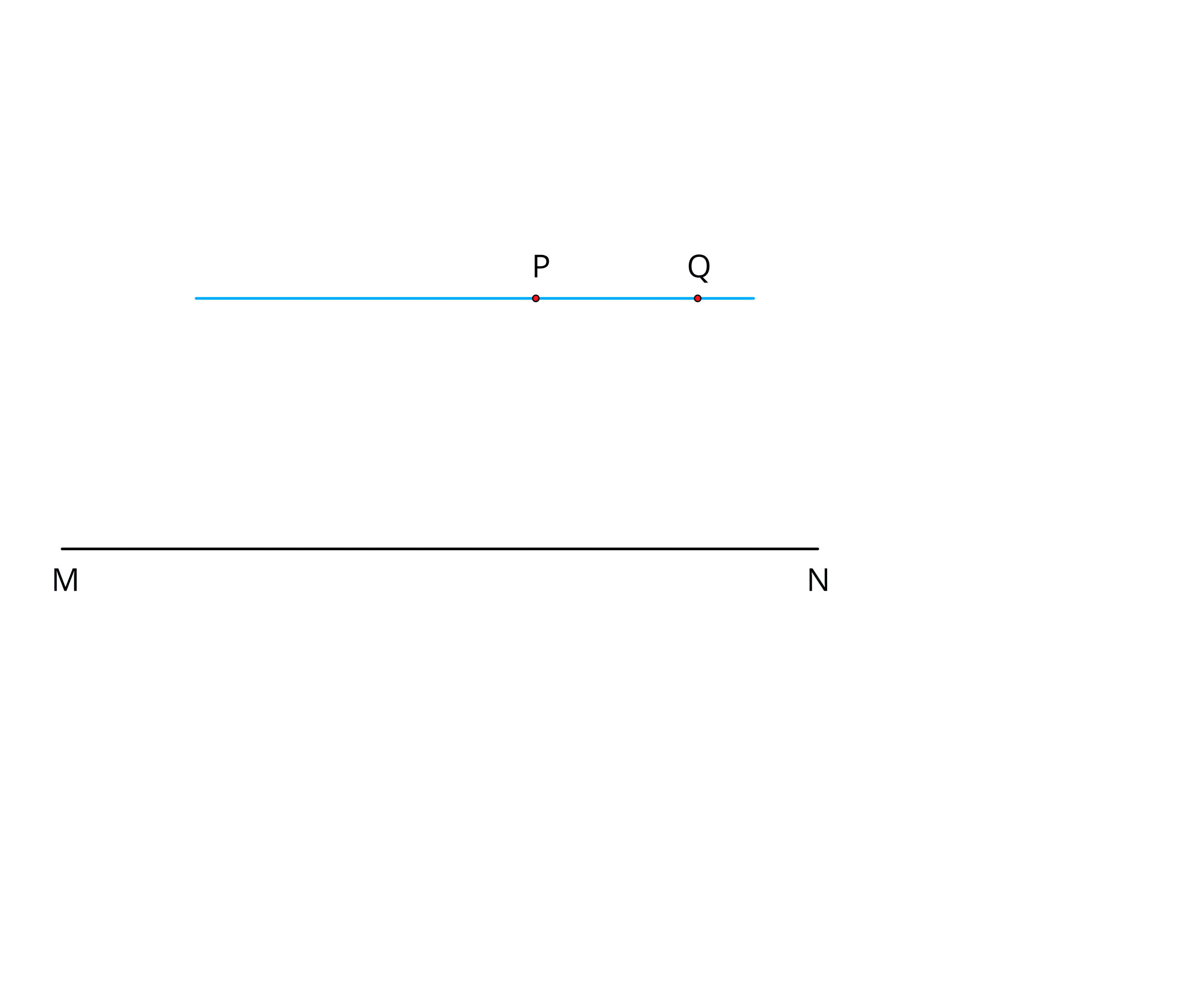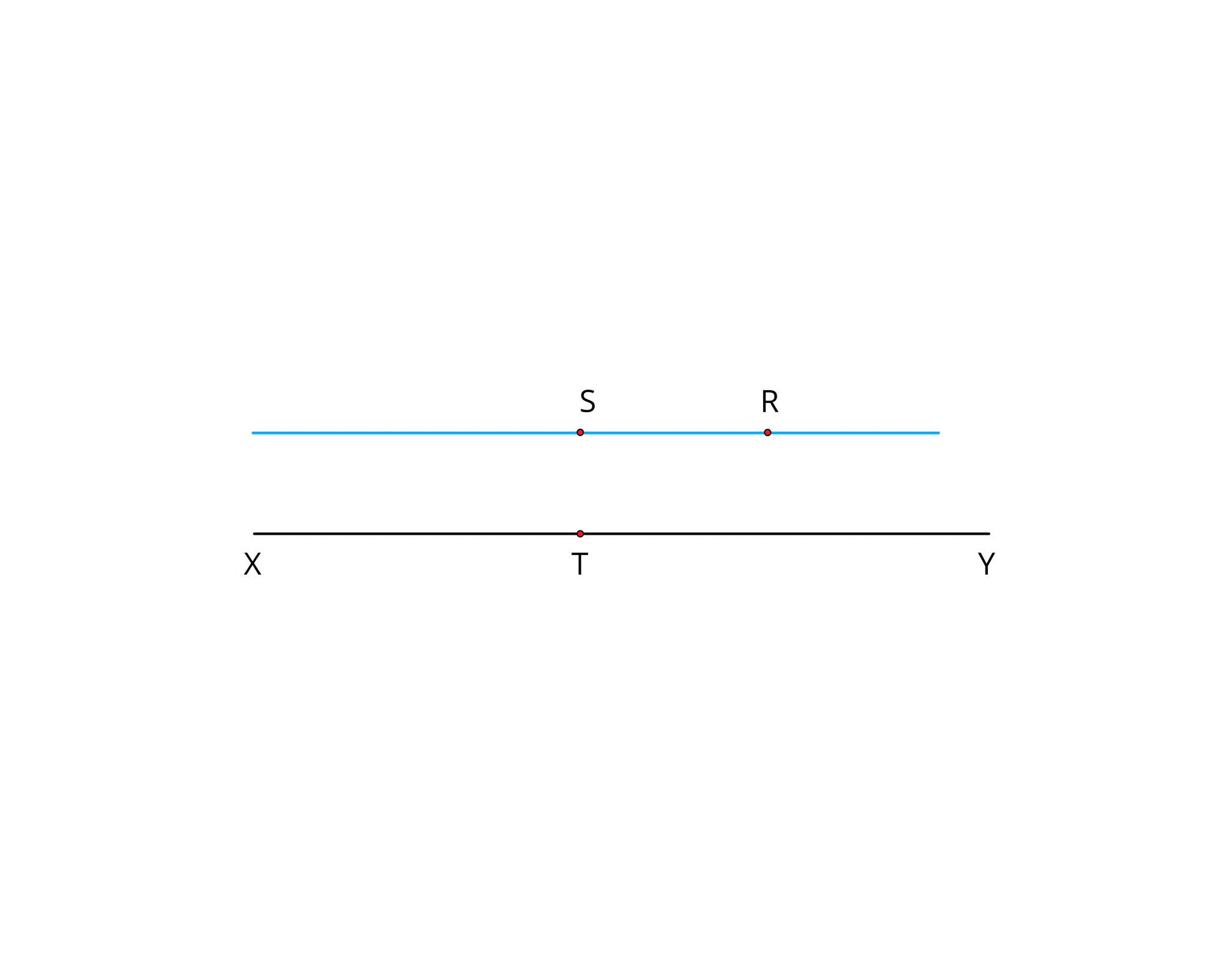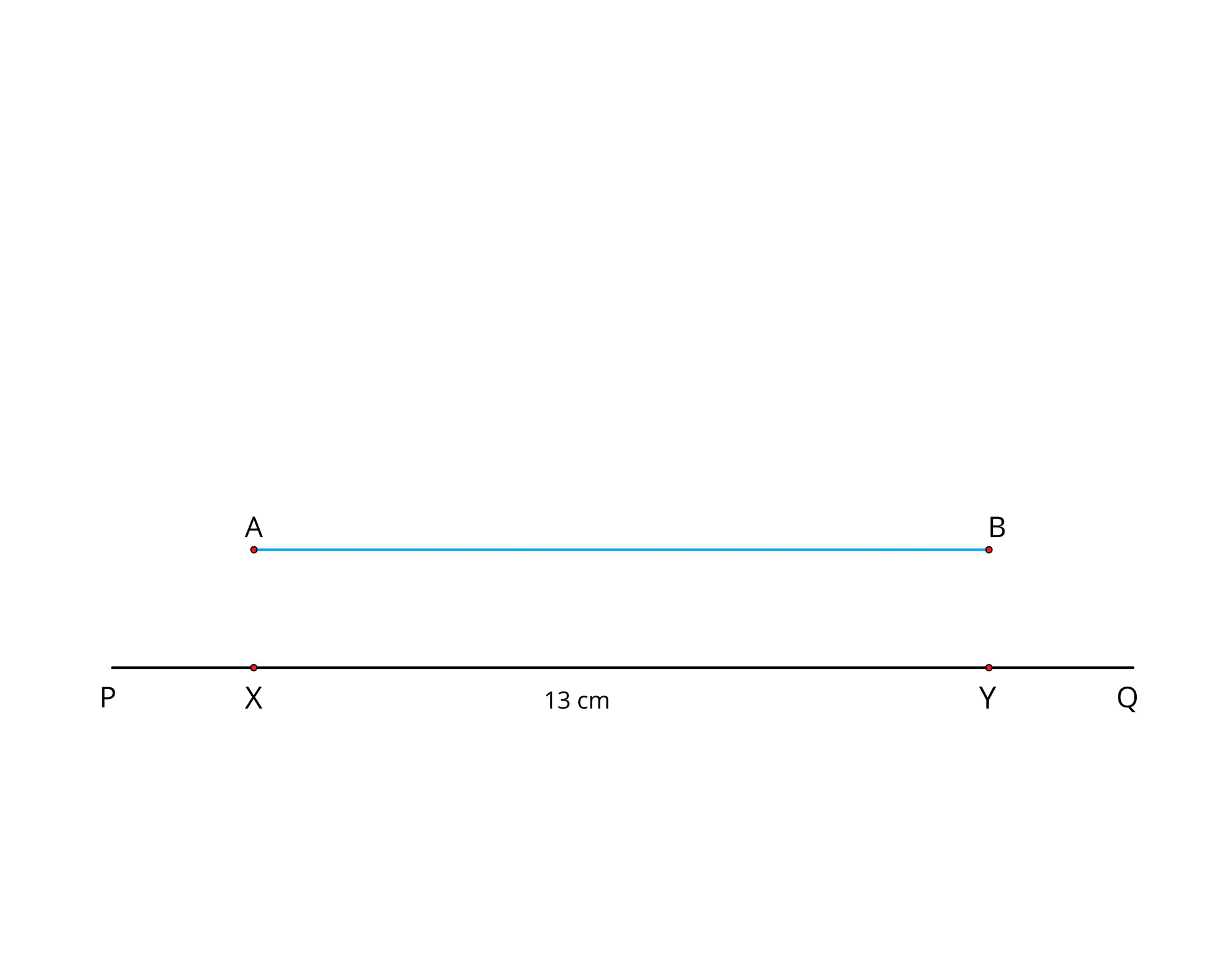PDF chapter test TRY NOW
Draw a line \(MN\) and mark a point \(P\) above it. Through \(P\) draw a line parallel to \(MN\).
Step \(1\): Draw a line \(MN\).
Step \(2\): Mark a point \(P\) anywhere above the line \(MN\).
Step \(3\): Place the set square below the line \(MN\)in such a way that one of the arms that form a right angle lies along \(MN\). Place the scale along the other arm of the set square.
Step \(4\): Fix the scale stably. Glide the set square along the arm of the scale until the other edge of the set square reaches the point \(P\).
Step \(5\): Now draw a line through \(P\) and extend it to \(Q\).
Step \(6\): The line \(PQ\) is parallel to the line \(MN\). That is, \(PQ \parallel MN\).

Draw a line and mark a point \(S\) at a distance of \(3.6 cm\) above the line. Through \(S\) draw a line parallel to the given line.
Step \(1\): Draw a line \(XY\).
Step \(2\): Mark a point \(T\) anywhere on the line \(XY\).
Step \(3\): Place the set square in such a way that the vertex of the right angle coincides with \(T\) and one of the edges of right angle lies along \(XY\). Mark the point \(S\) such that \(ST = 3.6 cm\).
Step \(5\): Now draw a line through \(S\) and extend it to \(R\) using set square.
Step \(6\): The line \(SR\) is parallel to the line \(XY\). That is, \(SR \parallel XY\).

Draw a line segment \(PQ = 13 cm\). Mark two points \(A\), \(B\) at a distance of \(4 cm\) above the line segment \(PQ\). Through \(A\) and \(B\) draw a line parallel to \(PQ\).
Step \(1\): Draw a line segment \(PQ =13 cm\).
Step \(2\): Mark two points \(X\) and \(Y\) on the line segment.
Step \(3\): Place the set square above the line \(XY\)in such a way that one of the arms that form a right angle lies along \(XY\) and coincide with the point \(A\). Measure the length of \(4 cm\) along the another arm and mark it as \(A\).
Step \(4\): Now move the set square along the line \(XY\) until its vertex point coincide with \(Y\).
Step \(5\): Now draw a line through \(P\) and extend it to \(Q\). Again, measure the length of \(4 cm\) along the another arm and mark that as \(B\). Now joint the points \(A\) and \(B\) by drawing the line.
Step \(6\): The line \(AB\) is parallel to the line \(PQ\). That is, \(AB \parallel PQ\).

